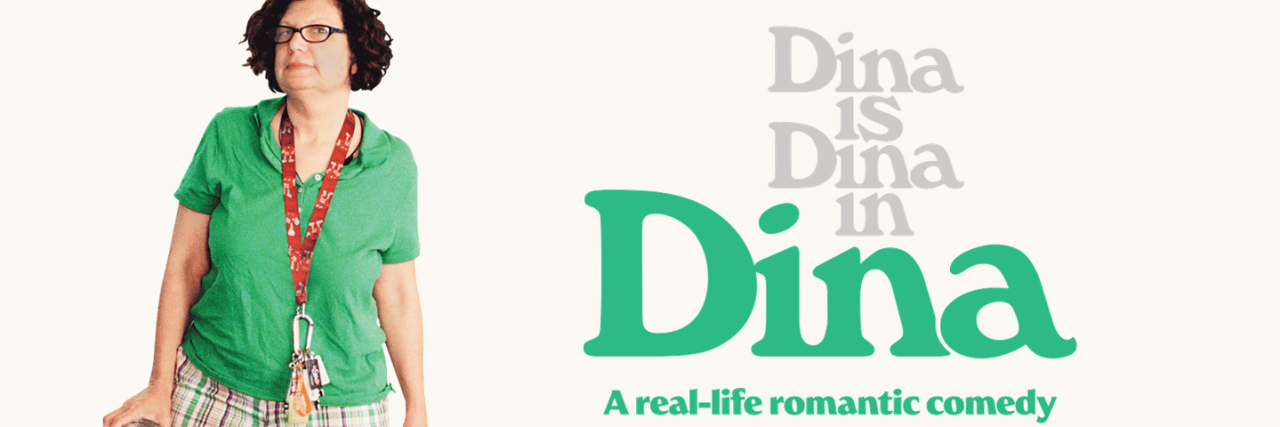Though the film “Dina” is being marketed as a real-life romantic comedy, it’s so much more than that. I feel there’s good reason why it received the highest accolade possible at the 2017 Sundance film festival, the Grand Jury Prize for a documentary. Its subject, Dina Buno, is a complicated, intelligent and hilarious 48-year-old woman, free of stereotypes and filled with agency as well as vulnerability. As we see her navigate life’s ups and down, we also learn that Dina happens to be diagnosed with several health conditions, including autism. In short, she is person living a complex life on her own terms, rather than the flimsy characters we’ve come to expect from Hollywood rom-coms. She is not defined by any one trait, experience or diagnosis.
“I was just being me,” Dina Buno told me in a recent interview when I asked what it was like to have a camera filming her day-in and day-out. To make the film, which centers around the lead-up to her wedding, she worked very closely with the film’s directors, Dan Sickles and Antonio Santini, filming countless hours of footage. The film shows Dina’s life in full, from everyday activities like going to the dentist, taking public transit and getting a manicure, to some of life’s most intimate moments, such as discussing her sexual needs with her fiancé, anxiety around sharp objects while cooking, and conversations with her mom about how to be a good partner in her marriage to Scott Levin, who also plays a big role in the film.
“In our collaboration, she’s questioning, challenging, and changing ideas about sexuality, aging, and autonomy for neurodiverse and neurotypical people alike,” co-director Dan Sickles said of Dina’s work in the film. “That’s an extraordinarily powerful thing to be doing in a society that prizes financial success and youth culture above all else.” When asked about the rigors of the film-making process, Dina says she’s always loved acting, writing and performing, but she also sees the work as a valuable metaphor. “I believe that life is kind of an acting career in some ways. When you have a down day and things are frustrating, it’s like an acting career where you say, well, I have a job to do, so I would get with it and do it.”
Dina is working on a memoir that discusses her childhood and life growing up, initially being diagnosed with paranoid personality disorder, being bullied in high school by classmates, her autism diagnosis in her early 20s, and surviving both the unforeseen death of her first husband and a violent crime years later. “Dina” co-director Antonio Santini reviews her writing as she prepares new chapters for this project. “When I am having a tough time writing something down,” Dina said, “Antonio tells me, ‘Just pull it from my heart.’ So we pull it from my heart together.” Santini is thrilled that his film has further motivated Dina to pursue her creative goals. “Our work is about building a bridge,” Santini said. “There are so many assumptions that people often make when someone’s been given an autism spectrum diagnosis,” he said, “and Dina debunks all of those assumptions.”
There are many ways to study autism spectrum disorders from from a clinical point of view, but if you want to understand the people who experience them, or see the universal human experience reflected through this lens, “Dina” the film (and Dina the person) provides this much-needed perspective. What the film sets out to do — and I think accomplishes — is to show why this woman is every bit a heroine as those we typically see on screen, deserving of and in charge of her own story.
“Dina” premiers in New York on October 6, Los Angeles on October 13, and London on October 20. You can find the film’s trailer and information on screenings and tickets on the “Dina” website.
Photo via “Dina” website.

